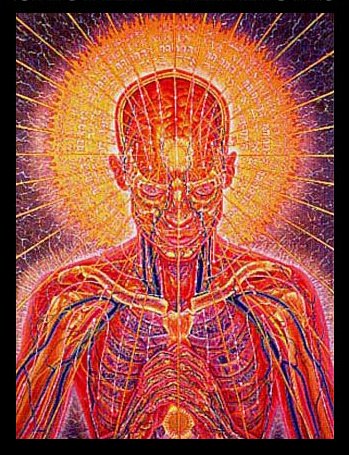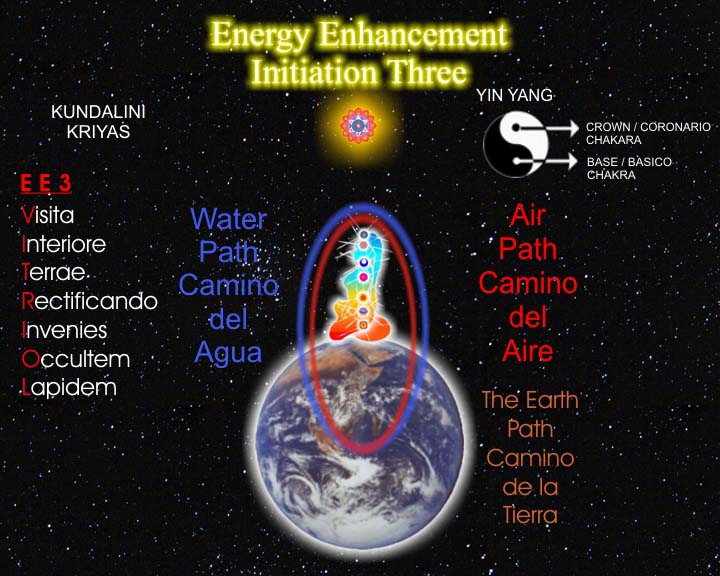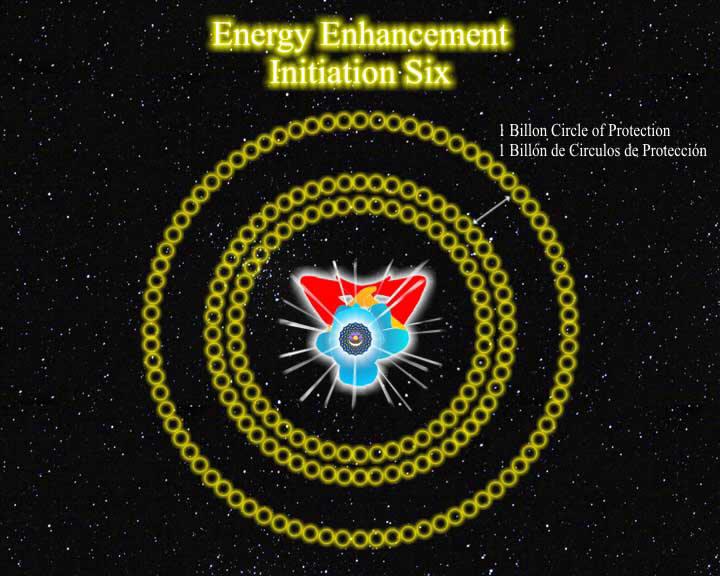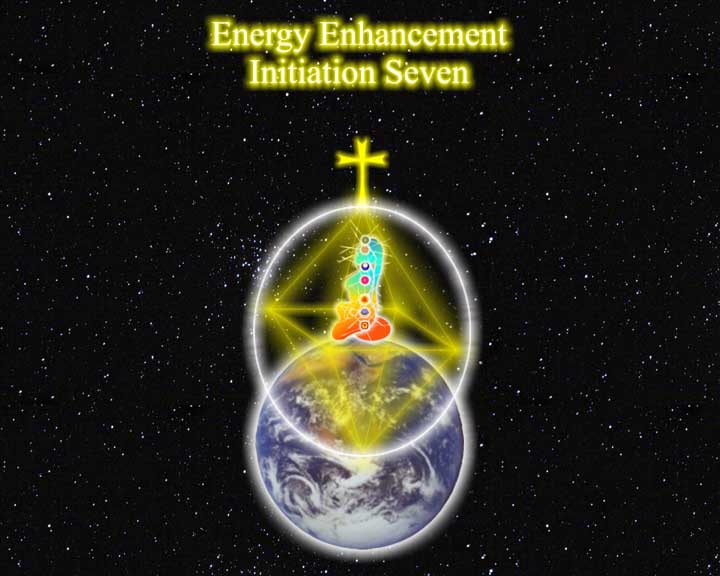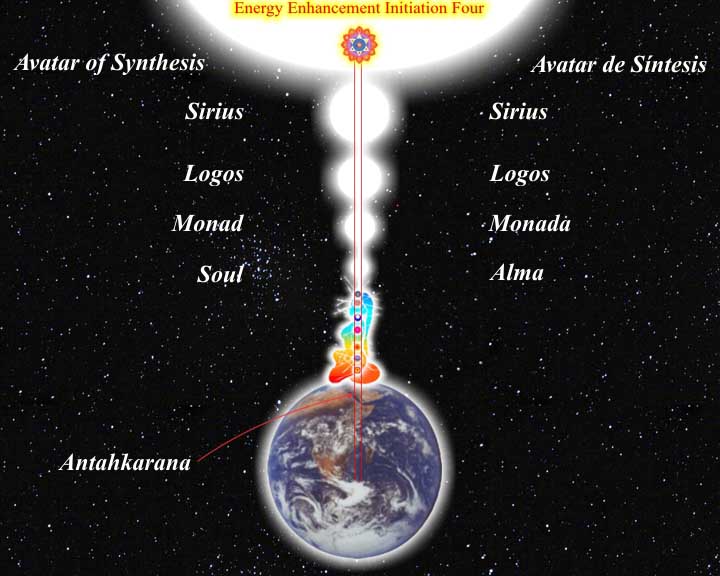This process itself is very simple; it is the preparation for the process which is complex. If you want to shake hands with the President in the White House, it is very simple. Nothing to it! But, although the ultimate process is simple enough, yet all the red tape and all the hurdles that you have to face and surmount in order to get yourself into a position in which you stand before him and merely have to raise your hand and clasp his, all this preparation may take many months. You have to have all your credentials and the date of the interview fixed by the President’s Office; then you have to book a seat on the plane or train, reserve your accommodation in Washington, and then, even if you do actually enter the White House, you may find that there are others who have come before you and a long wait may ensue before you may actually see the President.
In the same way, if you want to go into the Holy of holies by the simple process of plunging into deep meditation, the preparation for it may well take much of your time, energy and effort. You may have to seek out and talk to a dozen different teachers on the subject of meditation; discuss different methods with other seekers who are practising meditation; carry on research of your own in books and lessons; and experiment and learn by trial and error. The process of meditation itself is simple, but the preparation that leads you into it is lengthy and complex.
First and foremost, the mind is in a state of grossness. Gross minds cannot still the thoughts; it is only the fine mind that can concentrate, and it is only the pure mind which is fine. The impure mind is gross. The stuff of the mind, which is called “Chitta” in Yogic terminology, is gross when the nature of the being is not fully purified. What does this mean? Does it imply that a cleansing, like a soap-and-water scrubbing, is required? It means that there are blemishes in the human nature and these blemishes have to be eliminated.
This is a scientific fact. In order to meditate, certain conditions have to be eradicated. These blemishes—the impurities of human nature—may be anything from harshness, irritability, a little petty envy to greed, passion, hatred, lustfulness, anger, arrogance, haughtiness, delusion or covetousness. All these blemishes make the nature extremely gross, coarse and base. They are totally unspiritual and they make the mind unstable and cause it to oscillate. They, therefore, have to be totally eliminated and this is the ground-work, the spade work, the preparation, which is no simple task. This discipline, though apparently just an ethical one, yet has a direct bearing upon the scientific technique of Yoga. This constitutes the basic foundation upon which the structure of Yoga is raised.
The great science of Yoga, which leads you to meditation, is based upon a pattern of perfect moral rectitude and the life ethical. It refers constantly to a life of perfect-goodness, to an example of perfect character, to a course of perfect conduct and the highest virtue. Virtue is the sheet-anchor of all great attainments, all worthwhile attainments that do not vanish into thin air, that do not last only upon this earth-plane, but are enduring and for ever. The total removal of all blemishes is the very basis and foundation of all higher achievements, and if meditation is to be successful, the mind has to be pure, and if the mind is to be pure, you must grow in goodness, grow in virtue, and eliminate hatred and harshness from your nature altogether.
You must be kind to others—kind in thought, word and deed. Your speech must be sweet and your actions compassionate. In fact, you must become godly in your nature. This is essential because it is only a divine being that can experience the Divine. You have to reflect the nature of God. When God looks at you, He must feel the reflection of His divine nature in you. That nature should grow, unfold and bloom forth like a divine flower upon the soil of human nature. It is this growing forth into a life of virtue that is hard, for habitual traits in human nature die hard. However assiduously you may try to root them out, again and again you will find them cropping up in some form Or the other.
Lust, greed and covetousness have to be patiently and earnestly rooted out of your nature. The great Master of meditation, Patanjali, has said that the most effective way of growing into the divine nature is not so much by picking out your little weaknesses, like a monkey picking off lice (which is a waste of your time and energy), as by filling yourself with virtue.
Therefore grow in goodness the positive way, the forceful way. Be more and more truthful, exercise compassion, at every step create opportunities to demonstrate fellow-feeling, selflessness and the spirit of service. You thus grow in virtue by cultivating it positively and practising it actively. If you develop a tremendous passion for goodness, the negative side cannot remain. If you bring in the light, darkness cannot stand before it. Even so, if you thus fill yourself with perfection, you will crowd out all blemishes. Go all out an grow in this way into an ideal being.
This has a direct connection with meditation. One of the very great aids in meditation is to develop yourself into a pure and perfect being. The two processes are mutually inter-acting. In order to reach the highest stage in meditation you have to become a perfect being, and in order to grow into perfection, meditation is the greatest help to overcome all the weaknesses and defects in your nature by augmenting your will-power, by giving you clarity of thought, by sharpening your intellect, and thus increasing your power of discrimination. You are better able to discern what is proper and what is improper and you are better equipped to analyse yourself, because the mind becomes integrated due to concentration and meditation. It becomes subtle and sharp.
|
Next: Chapter 14: Meditation And Prayer, 6.The Power of the One-track Mind
Energy Enhancement Enlightened Texts Sri Swami Sivananda The Path Beyond Sorrow
Chapter 14
- Sri Swami Sivananda, The Path Beyond Sorrow Chapter 14: Meditation And Prayer
Sri Swami Sivananda, The Path Beyond Sorrow Chapter 14: Meditation And Prayer, The great subject of meditation, which we have the good fortune to consider now, is one which provides the ultimate solution to the greatest problem which has faced and challenged mankind ever since the dawn of Creationthe problem of life as well as of death at energyenhancement.org
- Sri Swami Sivananda, The Path Beyond Sorrow Chapter 14: Meditation And Prayer, 1.Value Of Meditation
Sri Swami Sivananda, The Path Beyond Sorrow Chapter 14: Meditation And Prayer, , In meditation, you are raised into an experience where you can laugh at death, where you can treat it as a mere trifle. You are given the realization of your ever-changeless existence. You are birthless, deathless, changeless, without beginning or end. You are given the solid experience of that realization right here and nownot in some after-life, not in the beyond. Even while you are in this body, you are thus liberated from the terror and the fear of death. You know that if something perishes, it is of the earth, earthy, but it affects you not. You are the deathless Spirit indwelling the body, remaining absolutely untouched even when the body is dissolved. You know that you are glorious and independent of the body and the mind. You realize that to you, there is no need of this body, that it is the same to you whether you are within the body or without the body. That is the triumph attained through meditation at energyenhancement.org
- Sri Swami Sivananda, The Path Beyond Sorrow Chapter 14: Meditation And Prayer, 2.Intellect and Intuition
Sri Swami Sivananda, The Path Beyond Sorrow Chapter 14: Meditation And Prayer, 2.Intellect and Intuition, Outwardly, due to the limitations of your physical frame, you are finite. Your powers also are limited. Your intellect is bound by the necessity of basing all conceptual activity upon name and form, for without name and form mind cannot conceive of any idea. Therefore, the very function of your intellect is possible only within the framework of name and form at energyenhancement.org
- Sri Swami Sivananda, The Path Beyond Sorrow Chapter 14: Meditation And Prayer, 3.Life Is Meant for Meditation
Sri Swami Sivananda, The Path Beyond Sorrow Chapter 14: Meditation And Prayer, 3.Life Is Meant for Meditation, Is it to be taken, then, that until our meditation has reached that ultimate stage of perfection, where it is able to open the intuitionthe centre of true Consciousnessall our effort is futile or that, until that stage is reached, meditation is just toil and effort with no gainful return or reward? The answer is an emphatic NO! The exact opposite is the case. Meditation brings you a reward the very day you start it. Immediately you begin to feel the blessedness of meditation and you get a great return in terms of greater tranquillity, composure, clarity of mind, balance and peacefulness. All these results come from the very start of proper meditation. That is the greatness of this process at energyenhancement.org
- Sri Swami Sivananda, The Path Beyond Sorrow Chapter 14: Meditation And Prayer, 4.The Process of Meditation
Sri Swami Sivananda, The Path Beyond Sorrow Chapter 14: Meditation And Prayer, 4.The Process of Meditation, Now, let us consider the definition of meditation according to those who have mastered this science and have expounded its principles. Pre-eminently, meditation is a process of the mind. It is a mental-cum-intellectual process and, therefore, it is entirely interior in its realistic form and takes place in the silence of your inner being. Patanjali, a great Eastern sage and exponent of the great science of mind-control, has given the world one of the most thorough and scientific works on the subject of meditation. He defines meditation as continuous unbroken concentration or the unbroken flow of the mind concentrated upon a single subject. This means that meditation has a certain target, as it were, upon which the concentrated mind is brought to bear. The concentrated mind is kept in this state, and the flow or continuity of thought is kept unbroken. It may be compared to the flow of oil from one vessel to another. This is meditation at energyenhancement.org
- Sri Swami Sivananda, The Path Beyond Sorrow Chapter 14: Meditation And Prayer, 5.CharacterThe Gateway to Meditation
Sri Swami Sivananda, The Path Beyond Sorrow Chapter 14: Meditation And Prayer, 5.CharacterThe Gateway to Meditation, This process itself is very simple; it is the preparation for the process which is complex. If you want to shake hands with the President in the White House, it is very simple. Nothing to it! But, although the ultimate process is simple enough, yet all the red tape and all the hurdles that you have to face and surmount in order to get yourself into a position in which you stand before him and merely have to raise your hand and clasp his, all this preparation may take many months. You have to have all your credentials and the date of the interview fixed by the Presidents Office; then you have to book a seat on the plane or train, reserve your accommodation in Washington, and then, even if you do actually enter the White House, you may find that there are others who have come before you and a long wait may ensue before you may actually see the President at energyenhancement.org
- Sri Swami Sivananda, The Path Beyond Sorrow Chapter 14: Meditation And Prayer, 6.The Power of the One-track Mind
Sri Swami Sivananda, The Path Beyond Sorrow Chapter 14: Meditation And Prayer, 6.The Power of the One-track Mind, It is the concentrated mind which can work efficiently and powerfully. All outstanding achievements have been won in every field by means of the power of concentrated thought. Master statesmen, master military strategists, master engineers, master scientists, inventors and surgeons have all achieved success through the power of concentrated thought. They have had what is called a one track mind. They made themselves so. They deliberately cultivated the one-track mentality. What was Einstein if not a man of meditation? He was able to probe into the innermost secrets of the vast universe in meditation and there the truths came tumbling to him. They were revealed to him. His intuition got sparked and this led to the discovery of the cosmic secrets which he then formulated in amazing equations at energyenhancement.org
- Sri Swami Sivananda, The Path Beyond Sorrow Chapter 14: Meditation And Prayer, 7.The Laws Of Thought
Sri Swami Sivananda, The Path Beyond Sorrow Chapter 14: Meditation And Prayer, 7.The Laws Of Thought, Meditation succeeds in a marvellous way in revealing the great truths of life through the operation of the laws of thought. The first law of thought is: anything which is held in the mind persistently and intensely dwelt upon for a protracted period of time soon becomes concretized into fact. It becomes as actual as a concrete fact. This is one of the great laws upon which the knowledge of the power of thought is based. The other law, which is not restricted to the mental and intellectual level, but goes deeper and beyond and is much higher, is a spiritual law. This law is: such deeply concentrated thought persisted in to its ultimate conclusion suddenly takes a leap beyond the intellect and mind and enters the realm of intuition. This is the law of transcendence. When the mind is totally concentrated and deeply absorbed in this process of meditation, it transcends itself and you are plunged into the experience of Pure Consciousness. It is similar to the electric current switched on to an arc lamp. When the current reaches one terminal of the arc, it faces a gap separating the two terminals and then, suddenly, with a flash it springs out, bridging the gap in an instant and bursts into the incandescence of a dazzling light at energyenhancement.org
- Sri Swami Sivananda, The Path Beyond Sorrow Chapter 14: Meditation And Prayer, 8.The Role of Body, Mind and Prana in Meditation
Sri Swami Sivananda, The Path Beyond Sorrow Chapter 14: Meditation And Prayer, 8.The Role of Body, Mind and Prana in Meditation, Body, Mind and Prana are all interconnected. There is, therefore, another great help for you to be found in the practice of sitting steadily in one position without moving the body, and holding that position in tranquillity. In the preliminary stages of Raja Yoga discipline, you find that the basis of your life of Yoga has to be established on an absolutely pure, ethical and moral life. Then you are ready to start sitting steadily every day. At some special time each day you should retire into a quiet corner and sit there steadily poised for your practice. You may sit on a chair, if you prefer such a position, keeping the spine erect, relaxing your body totally, locking your fingers, resting them on your knees, and try to remain in that state at energyenhancement.org
- Sri Swami Sivananda, The Path Beyond Sorrow Chapter 14: Meditation And Prayer, 9.Breathing Exercise for Mental Tranquillity
Sri Swami Sivananda, The Path Beyond Sorrow Chapter 14: Meditation And Prayer, 9.Breathing Exercise for Mental Tranquillity, I have explained this at length to students of Yoga to impress upon them the close co-ordination of body, breath and mind. This gives them a deeper understanding into the rationale of Yogic breathing exercises. Now, in these exercises, you have to concentrate on the breath. You may try one called Alternate Breathing. This is one of the simple techniques, alternate in the sense that you breathe in through one nostril, exhale through the other, then inhale once again through the second nostril and exhale through the first nostril. This completes one round. Thus, for this Alternate Breathing, you close your right nostril with your right thumb and inhale through the left nostril. When the inhalation is complete, you close the left nostril with your ring and middle fingers, simultaneously releasing the right nostril by raising the thumb, then exhale completely, slowly, smoothly and gradually through the right nostril at energyenhancement.org
- Sri Swami Sivananda, The Path Beyond Sorrow Chapter 14: Meditation And Prayer, 10.MeditationTemporal and Spiritual
Sri Swami Sivananda, The Path Beyond Sorrow Chapter 14: Meditation And Prayer, 10.MeditationTemporal and Spiritual, Now, before dealing with this subject, we have to note a distinction. We have been told that any process of concentrated thought is meditation. Meditation is a process used by all people. I have pointed out that scientists, for instance, are meditators; that inventors, statesmen, great military strategists like Napoleon, are all meditators. Great strategists, like Napoleon, sketched out their campaigns to the minutest detail, beforehand. Vast structures, like the Empire State Building, were erected by engineers who laid their plans, likewise, after concentration and meditation. Every nail that was necessary, every ounce of material, every angle and joint, was clearly indicated in the blueprint. As such, the process of meditation by itself is a purely scientific technique, but in its application in Yoga, it is entirely spiritual and not material or temporal at energyenhancement.org
- Sri Swami Sivananda, The Path Beyond Sorrow Chapter 14: Meditation And Prayer, 11.Aids to Successful Meditation
Sri Swami Sivananda, The Path Beyond Sorrow Chapter 14: Meditation And Prayer, 11.Aids to Successful Meditation, From the great mystics I shall give you some valuable suggestions for success on the path of meditation. They are: (a) Constant recollection; (b) Continuous prayerfulness; (c) Repetition of the Divine Name at energyenhancement.org
- Sri Swami Sivananda, The Path Beyond Sorrow Chapter 14: Meditation And Prayer, 12.MeditationA Panacea for All Ills
Sri Swami Sivananda, The Path Beyond Sorrow Chapter 14: Meditation And Prayer, 12.MeditationA Panacea for All Ills, St. Peter of Alcantara, one of the medieval sages, has said that it is morally impossible for him who neglects meditation (mental prayer) to live without sin. He who neglects mental prayer does not need a devil to carry him to hell; he takes himself there by his own hand. It must be stated, without reservation, that no other means has the unique efficacy of meditation and that, as a consequence, its daily practice can in no wise be substituted for. The common practice of all saints and the important ecclesiastical documents demonstrate how highly one should esteem meditation at energyenhancement.org
|
